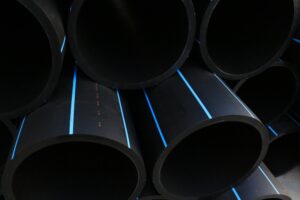What is Construction Dewatering

As we know, water is essential for life, but it can significantly hinder construction projects. Construction sites often encounter excess water during the building process, and dewatering plays a crucial role.
Dewatering involves removing or controlling groundwater or surface water from an area to create a dry and stable working space. This process ensures workers’ safety and prevents delays and potential damage to the project.
I will dive deeper into the concept of construction dewatering and the various methods used in the industry today. So, let’s grab our hard hats and explore this critical aspect of construction together!
Why is it Essential to Choose the Right Dewatering Methods?
Proper dewatering methods are paramount in construction and civil engineering ventures to uphold site stability, safety, and operational efficiency. The strategic choice of dewatering techniques mitigates water-related issues like soil erosion, foundation instability, and construction setbacks and curtails escalating expenses and potential safety risks.
Moreover, effective dewatering practices foster a dry and steadfast work environment, facilitating meticulous and precise construction operations. Beyond operational benefits, these practices aid in upholding environmental standards by averting contamination and unregulated water discharges. When choosing the proper dewatering methods, it is essential to prepare a Waterproofing estimate to ensure the long-term effectiveness of the waterproofing system and avoid potential issues with water infiltration and structural damage.
Methods for Dewatering in Construction Projects
Several methods are commonly employed for dewatering, each suited to specific site conditions and project requirements:
Wellpoint Systems:
Wellpoint dewatering, a method commonly used in construction projects, entails the installation of closely spaced shallow wells known as wellpoints. These points are interconnected to a central header pipe, the main conduit for water extraction. Using vacuum pumps creates a negative pressure within the healthy points, effectively reducing the groundwater table around the excavation area. This process facilitates the efficient removal of water from the site, ensuring a stable and dry working environment for construction activities.
Deep Well Systems:
Deep well dewatering involves the use of specialized large-diameter boreholes that are fitted with submersible pumps. These pumps are designed to draw water from deep aquifers or substantial depths below the ground. This technique proves to be highly efficient when managing groundwater levels in deep excavations or regions characterized by high water tables.
Sump Pumping:
Sump pumping, a process crucial for managing localized water accumulation, entails collecting water in sump pits or basins within the excavation. Utilizing pumps, the accumulated water is discharged to a suitable location, including a drainage system or a nearby water body. This method serves as an effective solution for addressing issues related to water accumulation in specific areas.
Open Ditching and Gravity Drainage:
Open ditches and gravity drainage systems are straightforward techniques for diverting surface water from the construction site. These methods involve the creation of channels or trenches that facilitate the natural flow of water away from the worksite, effectively minimizing the accumulation of standing water and mitigating the risk of flooding during construction activities.
Geotextile Tubes:
Geotextile tubes or bags, also known as tubes, are commonly used for dewatering applications. These structures are filled with sediment and work by allowing water to drain out while retaining solids within the tube. This method is particularly effective for treating sediment-laden water, making it a valuable tool in environmental remediation efforts. When managed correctly, geotextile tubes offer an environmentally friendly solution for water treatment and sediment containment projects.
Pumping Stations:
Pumping stations play a crucial role in water management by utilizing pumps and pipelines to efficiently. Transport water from the excavation site to a discharge or treatment facility. These systems are designed to handle significant volumes of water making them indispensable for effectively. Managing water in deep excavations or regions with high groundwater levels.
Chemical Dewatering:
Chemical dewatering involves using polymers or flocculants to treat water, causing suspended particles to settle and separate from the liquid phase. This method is effective for separating solids from water for disposal or reuse.
Construction teams can effectively manage water levels, ensure site safety, and optimize construction operations by selecting the appropriate dewatering method based on site conditions, project scale, and environmental considerations.
To read more articles visit Surfaceseven
Conclusion
Construction dewatering is an essential process that helps to ensure the safety and effectiveness of any construction project involving excavation below the groundwater level. Excess groundwater can be effectively removed and managed during the construction process through various methods such as well points, sumps, and trenches. I have explored the different dewatering techniques, including their benefits and limitations. With careful consideration and proper management, construction dewatering can significantly contribute to creating safe and sustainable structures that will stand the test of time. So next time you pass a construction site surrounded by pumps and hoses pulling up water from deep within the ground, remember the vital role that dewatering plays in making it all possible.




